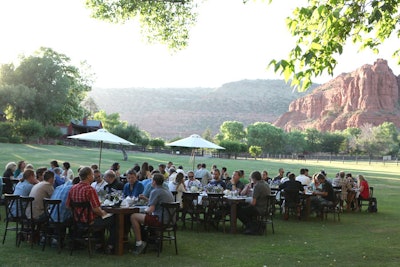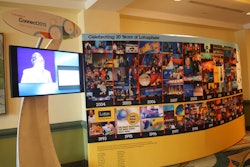
Social media has given customers a platform to share their opinions of brands and products with millions of people worldwide with the touch of a button. That puts them in a powerful position and has created challenges for companies trying to determine how, if at all, to manage those external voices. Marketing professionals have focused on identifying the most passionate customers and creating brand advocates, whether in a formal or informal relationship. That relationship can have an impact online and offline as planners enlist their advocates at face-to-face events, capitalizing on the concept that what others say about a brand is far more powerful than what a brand can say about itself.
“Although it’s clear that online recommendations influence business decisions and perceptions, nothing is more powerful than a face-to-face recommendation where the person receiving the recommendation knows who the advocate is,” said Rob Fuggetta, founder and C.E.O. of Zuberance, a social media marketing company that manages brand advocacy programs. “Companies just getting their advocates to share on Facebook or Twitter are missing a big opportunity if they are not integrating offline advocacy into their program as well.”
I.B.M. created its advocacy program several years ago and now has more than 400 “I.B.M. Champions.” Participants are bloggers, clients, and business partners who are selected for one-year terms from a pool of applications submitted each fall. The company maintains regular communication with its Champions, giving them an inside track on products and services. At the I.B.M. Connect conference in Orlando in January, the company set out to increase the visibility of the program by developing activities such as a Twitter photo contest to encourage attendees to interact with the 75 Champions at the event.
“These are influencers who are passionate about this part of the I.B.M. portfolio, and they want to share their joy about it, but they are also building their own personal brand," said Colleen Hayes, director of market segment management for I.B.M.’s collaboration solutions.
At the conference’s opening general sessions, organizers created a special seating area up front for these brand advocates, and I.B.M. general manager Alistair Rennie talked about the program while sharing photos of the participants on a large screen. In each breakout session, attendees saw a slide show of the Champions’ photos at the beginning and end of every presentation. Organizers also involved some Champions as speakers and panelists in “Social Buzz Talks,” short casual sessions held on the trade show floor.
“The awareness of the program was really elevated because of the visibility we gave them," said Joyce Davis, a community manager for I.B.M. "There is also some credibility that goes along with it. That brings a lot more authority when, for example, they go into a meeting. They are really seen as an expert because people say, ‘Oh they are a Champion, we’ll I’ve heard of that.’”
Columbia Sportswear created its brand advocacy program in early 2012 when it invited 10 outdoor enthusiasts to participate in its inaugural OmniTen program. “We had a desire to connect with these superfans or people who had an outside view of the brand and had strong opinions. We didn’t necessarily look for people with the biggest fan count,” said Scott Trepanier, the company’s senior manager of PR and promotions. "We looked for people who were good content developers, maybe they took really good photos or great videos, which we could then re-share. In front of our community it has a lot more weight because it is a third-party perspective."
Last summer, Trepanier invited the OmniTen members to join 40 journalists at a weeklong product launch event in Sedona, Arizona. “We didn’t give them an assignment or a task. We didn’t want to create a tit-for-tat relationship. We wanted to see what came out organically," he said. "And what we noticed was they brought a lot of energy to the event. A lot of editors are very stoic and very objective. The great thing was these OmniTen members were going through the experience with fresh eyes. It was new for them, and they brought a level of emotion and excitement that contributed to a positive PR pop."
Columbia’s advocates participate for six months; the company is now in its third round of OmniTen. “We are building an alumni program where we can continue to feed them products for testing, and from time to time we’ll reach out with special activities,” Trepanier said. He and Davis both said their programs work best when the brand advocates have a say in how they participate. “We had a lot of ideas of what we were going to do with OmniTen,” he said. "But we didn’t want to be dictatorial; we wanted to get interesting people together and see what would happen."


















